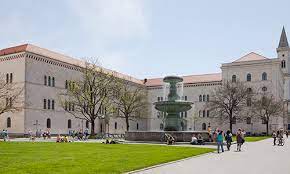Attending one of Canada’s highly-ranked medical schools has become an increasingly popular pathway for aspiring physicians from Canada and internationally. Canada boasts 17 fully-accredited medical schools that produce world-class doctors and medical research at relatively affordable tuition rates compared to schools in other countries.
However, getting admitted into one of these competitive programs can be challenging. Only a small percentage of medical school applicants in Canada get accepted each year.
This definitive guide covers everything you need to know about successfully applying to and attending medical school in Canada, including:
- Key requirements to apply
- An overview of all accredited Canadian med schools
- Strategies to strengthen your application
- What to expect when studying medicine in Canada
- The medical licensure process after graduation
- Pros and cons of earning your MD in Canada
Plus additional tips and insights from admissions experts across the top Canadian medical schools.
Prerequisites for Applying to Canadian Medical Schools
In order to qualify for entry into any of Canada’s medical schools, you will need to meet a strict set of prerequisite coursework and test score requirements:
Coursework Prerequisites
At a minimum, you must complete or be in the final stages of completing a bachelor’s degree at an accredited university prior to matriculating. This degree can be in any discipline, however it must include the following prerequisite coursework:
- General biology
- General chemistry
- Organic chemistry
- Physics
- Biochemistry
- Humanities and social sciences courses
Some schools may have additional requirements beyond this standard prerequisite coursework, so be sure to check the website of your target schools. For example, some request statistics, psychology, advanced biology, or calculus coursework.
You should aim to achieve a minimum overall GPA of 3.5 in your bachelor’s program, and at least 3.7 to 3.8 GPA in your prerequisite science courses in order to be a competitive applicant. The average admitted student GPA is around 3.8 to 3.9.
MCAT Exam Score
Nearly all medical schools in Canada require applicants to write the Medical College Admission Test (MCAT) exam. This is a difficult, standardized test that assesses skills and knowledge in biological, chemical, physical, biochemical and psychological concepts that form the foundations of modern medicine.
The exam is scored between 472 to 528, with the average score being around 506 to 512. To be a competitive applicant to Canadian medical schools, you should score at least 510, with a score of 518 or higher considered extremely good.
The MCAT exam can be attempted multiple times, but it is important to prepare thoroughly and aim for your best score on the first try if possible. Schools will see all your scores so a lower initial score can negatively impact your application.
Applying to Canadian Medical Schools
There are two main application systems used by medical schools in Canada:
- Ontario Medical School Application Service (OMSAS) – For all six Ontario medical schools
- American Medical College Application Service (AMCAS) – For medical schools outside Ontario
A few smaller schools use their own application form rather than the centralized systems.
The timeline for applying is quite regimented if you want the best shot at acceptance:
- May-August – Submit primary application through OMSAS/AMCAS
- Early July – Last MCAT test date for current application cycle
- October-March – Interview invitations sent out by schools
- February-April – Final admissions decisions sent by most schools
- May – Final deadline to accept offers and submit tuition deposits
Applications open as early as mid-July the year prior to when you hope to begin medical school. The final submission deadlines range between October to December depending on the school.
In addition to your academic history, test scores, and transcripts, your application will include important components like:
Reference Letters
Most schools require 2 to 4 letters of reference that endorse your academic abilities, interpersonal skills, professionalism and suitability for medicine. These usually include letters from undergraduate professors/advisors and potentially from healthcare mentors like physicians you’ve shadowed.
Essays
You will need to thoughtfully answer essay and short answer questions for each school you apply to. These give admissions committees insight into your motivations for medicine and assess qualities like critical thinking, communication skills and empathy.
Extracurricular Activities
An important admissions criterion is your involvement outside academics, including volunteering, research, leadership roles, athletics, music, etc. These activities display well-rounded interests and your service to community – values important in medical practice.
Interviews
If invited, it is mandatory to participate in an admissions interview that further assesses personal competencies needed in medicine. Multiple mini interviews (MMIs) are now commonly used, which consist of a circuit of short conversation-based scenarios with evaluators.
Understanding what medical schools look for in applicants and thoroughly preparing each component of your application is vital for increasing your odds of acceptance.
Overview of Accredited Canadian Medical Schools
There are currently 17 medical schools in Canada that have been approved by accreditation bodies to deliver programs leading to the MD or equivalent degree.
Here is an overview of each accredited Canadian medical school, including locations, program details, rankings, and admissions rates when available:
Memorial University of Newfoundland (MUN)
- Location: St. John’s, Newfoundland
- Average Entering Class Size: 80
- 4-Year Undergraduate MD Program
- Tuition: Approx $13,000 per year (Canadian), $66,000 per year (International)
- Ranked Among Top Schools for Family Medicine Specialization
- Acceptance Rate: 10% In-Province, 3% Out-of-Province
Dalhousie University (DMU)
- Location: Halifax, Nova Scotia
- Average Entering Class Size: 115
- 4-Year Undergraduate MD Program
- Tuition: Approx $21,000 per year (Canadian), $62,000 per year (International)
- Strength in Community-Based Medical Education
- Acceptance Rate: 9.3%
Laval University (UL)
- Location: Quebec City, Quebec
- Average Entering Class Size: 200
- 4-Year Undergraduate MD Program Offered in French
- Tuition: Approx $7,500 per year (Quebec resident), $44,500 per year (Out-of-province)
- Only School in Canada Offering Bilingual Medical Program
- Acceptance Rate: 10%
University of Ottawa (UO)
- Location: Ottawa, Ontario
- Average Entering Class Size: 156
- 4-Year Undergraduate MD Program Offered in English and French
- Tuition: Approx $21,000 per year (Ontario), $58,000 per year (Out-of-province)
- Ranked 5th Among Medical Schools in Canada (Maclean’s 2022)
- Acceptance Rate: 4.8%
Northern Ontario School of Medicine (NOSM)
- Locations: Sudbury and Thunder Bay, Ontario
- Average Entering Class Size: 64
- 4-Year Undergraduate MD Program
- Tuition: Approx $25,500 per year (Canadian), $79,000 per year (International)
- Ranked #2 in Canada for Social Accountability (THE Impact Rankings 2022)
- Acceptance Rate: 2.7%
Queen’s University (QU)
- Location: Kingston, Ontario
- Average Entering Class Size: 100
- 4-Year Undergraduate MD Program
- Tuition: Approx $25,500 per year (Ontario), $75,500 per year (Out-of-province)
- Ranked Canada’s #1 Medical Doctoral University (Maclean’s 2022)
- Acceptance Rate: 3% In-Province, 0.3% Out-of-Province
University of Toronto (UT)
- Location: Toronto, Ontario
- Average Entering Class Size: 259
- 4-Year Undergraduate MD Program
- Tuition: Approx $32,000 per year (Canadian), $64,000 per year (International)
- Ranked Canada’s Top Medical School (US News 2022)
- Acceptance Rate: 2% In-Province, 0.3% Out-of-Province
McMaster University (MU)
- Location: Hamilton, Ontario
- Average Entering Class Size: 165
- 3-Year Undergraduate MD Program
- Tuition: Approx $25,500 per year (Ontario), $75,500 per year (Out-of-province)
- Pioneered Problem-Based Medical Education Curriculum
- Acceptance Rate: 5% In-Province, 1% Out-of-Province
Western University (Schulich)
- Location: London, Ontario
- Average Entering Class Size: 146
- 4-Year Undergraduate MD Program
- Tuition: Approx $25,500 per year (Ontario), $75,500 per year (Out-of-province)
- Ranked Canada’s 6th Best Medical Doctoral University (Maclean’s 2022)
- Acceptance Rate: 5%
University of Manitoba (UM)
- Location: Winnipeg, Manitoba
- Average Entering Class Size: 65
- 4-Year Undergraduate MD Program
- Tuition: Approx $18,500 per year (Canadian), $58,500 per year (International)
- Affiliated With Cooperating Hospitals Across Rural Manitoba
- Acceptance Rate: 10% In-Province, 2% Out-of-Province
University of Saskatchewan (USask)
- Location: Saskatoon, Saskatchewan
- Average Entering Class Size: 100
- 4-Year Undergraduate MD Program
- Tuition: Approx $21,000 per year (Canadian), $63,000 per year (International)
- Ranked Among Canada’s Top Medical-Doctoral Schools (Maclean’s 2022)
- Acceptance Rate: 14% In-Province, 3% Out-of-Province
University of Calgary (UC)
- Location: Calgary, Alberta
- Average Entering Class Size: 115
- 4-Year Undergraduate MD Program
- Tuition: Approx $21,000 per year (Canadian), $63,000 per year (International)
- Leaders in Competency-Based Medical Education
- Acceptance Rate: 8% In-Province, 2% Out-of-Province
University of Alberta (UA)
- Location: Edmonton, Alberta
- Average Entering Class Size: 130
- 4-Year Undergraduate MD Program
- Tuition: Approx $21,000 per year (Canadian), $63,000 per year (International)
- Affiliated With One of Canada’s Largest Academic Health Sciences Centres
- Acceptance Rate: 14%
University of British Columbia (UBC)
- Location: Vancouver, British Columbia
- Average Entering Class Size: 288
- 4-Year Undergraduate MD Program
- Tuition: Approx $17,000 per year (Canadian), $71,000 per year (International)
- Among Highest Research Funding of Canadian Medical Schools
- Acceptance Rate: 2.3% In-Province, 1.3% Out-of-Province
Northern Medical Program (UNBC)
- Locations: Prince George, Northern British Columbia
- Average Entering Class Size: 30
- 4-Year Undergraduate MD Program
- Tuition: Approx $26,500 per year (Canadian), $141,500 per year (International)
- Focuses on Rural, Remote, Indigenous and Northern Medicine
- Acceptance Rate: Varies Annually
Université de Sherbrooke (USherbrooke)
- Location: Sherbrooke, Quebec
- Average Entering Class Size: 200
- 4-Year Undergraduate MD Program in French
- Tuition: Approx $5,300 per year (Quebec students)
- Only School Requiring Bachelor’s Degree Prior to Entry
- Acceptance Rate: Varies Annually
Université de Montréal (UMontreal)
- Location: Montreal, Quebec
- Average Entering Class Size: 250
- 4-Year Undergraduate MD Program in French
- Tuition: Approx $5,300 per year (Quebec students)
- Affiliated with One of Canada’s Largest University Health Networks
- Acceptance Rate: 24% Quebec Residents, 3.9% Out-of-Province
This covers the key details on each current MD-granting medical program in the country. However, note that new medical schools have been recently approved and will welcome their first cohorts within the next few years, including:
- York University School of Medicine – Toronto, Ontario
- Surrey Memorial Hospital Medical Program – Surrey, British Columbia
Getting Into Top Ranked Canadian Medical Schools
Gaining acceptance into one Canada’s highly selective medical schools can be extremely difficult due to limited spots and stiff competition.
For example, the University of Toronto medical school receives over 4,000 applications annually for less than 300 first year placements. Meanwhile McGill University, which is not featured in the list above but is sometimes chosen by Americans for its Ivy-league reputation, admits only 77 students from a pool of over 4,000 applicants every year.
So what can you do to stand out and get accepted to these top medical schools in Canada? Here are key tips:
- Achieve Academic Excellence – While the average GPA for successful applicants ranges between 3.7 and 4.0, accepted students at schools like UofT, McGill and UBC tend to have undergraduate GPAs in the 3.95+ range. Bringing up your grades through a second undergraduate degree can demonstrate improvement.
- Obtain Strong Reference Letters – Make meaningful connections with professors and healthcare professionals who can endorse your capabilities. Letters from renowned doctors or researchers carry more weight.
- Get Research or Work Experience – Gaining unique experiences boosts your application. Publishing academic papers, assisting in clinics abroad, or taking a PhD research year all help you stand out.
- Exemplify Leadership and Volunteerism – Developing and leading major extracurricular initiatives displays exceptional skills sought after by top tier programs.
- Ace the Interview – Prepare to thoughtfully articulate your passion for medicine to assessors. Research each school’s values and curriculum ahead of time.
Medical schools also aim to create a diverse, world-ready cohort not defined solely by grades. Turning failures into lessons learned, overcoming adversity, demonstrating resilience, and giving back to community can help your personal narrative stand out.
While no applicant is guaranteed entry even with superb scores and experiences, dedicating time to build an extraordinary application maximizes your probability of getting that coveted acceptance letter.
Chances for International Students
All accredited Canadian medical schools accept applications from citizens and permanent residents of countries outside Canada. So there are indeed opportunities for international students to study medicine in Canada.
However, note that the number of spots reserved for non-Canadians is typically capped at 10-20% of the class. Certain schools like McGill restrict international applicants to less than 5% of seats.
This means acceptance rates for international applicants tend to be 1-3% depending on competitiveness of the school. But those who do get in are afforded the same quality education and opportunities to practice medicine in Canada compared to domestic peers.
Studying Medicine in Canada
Once accepted to a Canadian medical school, what can students expect from their training towards becoming licensed physicians?
Undergraduate vs. Graduate Programs
Canada has both traditional 4-year undergraduate programs granting a bachelors level MD degree, as well as graduate-entry programs requiring a prior bachelors degree before applying or beginning medicine.
Most established schools like University of Alberta and University of Toronto operate undergraduate programs, though interest in graduate programs has risen recently. Newer schools like the Northern Ontario School of Medicine (NOSM) and Université de Sherbrooke mandate a completed undergraduate degree to apply.
The prior undergraduate training and life experience of those in graduate programs are perceived by some as better preparing these ‘mature students’ for the responsibilities of medicine. However, undergraduate programs allow students to immediately channel their knowledge towards a medical career.
Both tracks can produce equally skillful physicians. Choosing between undergraduate vs. graduate medical education often depends on your personal academic timeline and learning preferences.
Pre-Clinical vs. Clinical Training
The initial pre-clinical years of medical school focus on classroom scientific knowledge – delving into advanced concepts in anatomy, physiology, biochemistry, pharmacology, pathology and related disciplines that doctors depend on.
Once this base is built, the latter clinical years give hands-on training under preceptorship of licensed physicians across core specializations – providing invaluable opportunities to integrate knowledge learnt through seeing patients in hospital wards and clinics.
Canada’s
Links provided by Claude may not always be valid or up to date. We appreciate your patience as we work to improve link accuracy.Copy
Continue
MA
medical schools shine in the clinical training opportunities they provide, being situated amongst some of the best hospitals and health systems in the world. Students get exposure to a wide variety of cases, specialized technologies, and experts across diverse fields of practice.
The exact timeframe and details of clinical rotations varies between Canadian schools, but the following core placements are standard:
- Family Medicine: Gaining understanding of continuity of care, preventative medicine and managing diverse conditions in community-based family practice.
- Internal Medicine: Learning diagnosis and management of diseases affecting adult patients in hospital settings. Exposure to subspecialties like cardiology, respirology and neurology.
- Obstetrics & Gynecology: Training in prenatal care, birth process, women’s reproductive health and related surgical procedures.
- Pediatrics: Caring for infants, children and adolescents – mastering issues unique to younger patients.
- Psychiatry: Evaluating and treating mental health issues under supervision of psychiatric professionals.
- General Surgery: Hands-on training for common surgeries, working with surgical teams and managing perioperative care.
The remaining years allow elective exposures based on chosen specialization interests before matching into residency training to further hone skills after graduation.
Practicing Medicine After Graduating in Canada
Graduating from an accredited Canadian medical school is the first step towards licensing which permits you to practice medicine in Canada. Here are next steps:
Complete Licensure Examinations
All provinces require passing a series of rigorous licensure tests before granting an independent medical license to recent graduates:
- MCCEE – Evaluates knowledge of clinical disciplines. Administered during final year of medical school.
- MCCQE Part I – Assesses core competence in medicine, pediatrics, obstetrics, gynecology, preventative medicine, etc. Typically taken after graduation.
- MCCQE Part II – Focuses on clinical decision making and evaluation skills via extensive simulation cases. Taken after 1+ years of residency.
Additionally, most provinces mandate completion of appraisal exams during residency tailored to common day-to-day scenarios encountered in Canadian practice.
International medical graduates looking to practice in Canada have additional requirements like MCCEE/MCCQE equivalence exams prior to residency or licensure eligibility.
Complete Residency
After earning their MD, graduates enter supervised residency training programs across various specializations selected through CaRMS – Canada’s national residency matching service.
Residency lengths vary between 2 years for family medicine, up to 6 years for surgical subspecialties or neurosurgery. These intensive hands-on programs under guidance of trained specialists equip new physicians with skills to practice independently.
Residents become eligible for full medical licensure upon satisfactory completion of residency training requirements in their province.
Find a Job
Seeking employment after residency depends on:
- Area of Practice – Family doctors are high demand across both rural and urban regions in Canada. Specialists tend to work in metropolitan hospital networks and academic centers.
- Preferred Working Setup – Options range from independent community clinics, to large group practices, hospitals and academic institutions.
- Location Preferences – Most new doctors begin working in the province where they completed residency due to established networks.
Salaries also depend on above factors but generally range from $200,000 up to $350,000 annually for family physicians and medical specialists in Canada.
With ageing demographics and doctor retirement rates in Canada outpacing supply, the job market continues to be quite encouraging for newly graduated physicians.
The Pros and Cons of Attending Medical School in Canada
What are the major advantages of earning your MD domestically, and what are some downsides to consider?
Key Advantages
- World-Class Medical Education – Canada’s leading medical schools like UToronto and McGill are globally renowned, equipping graduates to practice anywhere.
- Lower Tuition Costs – Tuition for Canadian citizens at medical schools generally ranges from $20,000 to $30,000 per year – substantially lower than equivalent US private schools charging $60,000+ annually.
- Easier Pathway to Licensure – Graduating from an accredited Canadian medical program provides direct path to practice domestically. Easier process than foreign graduates trying to get licensed.
- Access to Universal Healthcare – Exposure to Canada’s single payer public system provides great training for new doctors. Hands-on experience with centralized medical records also advantageous.
Key Disadvantages
- Extremely Competitive – With acceptance rates often less than 5%, limited seats make gaining admission very difficult even for top students. May need to apply strategically to multiple schools to increase odds.
- Preclinical Training Limits – Due to Canada’s public healthcare model, reduced access to cutting-edge technologies, simulations and cadaver labs compared to well-funded US schools during classroom training. Students need to take initiative to compensate through external opportunities.
- Fewer Global Health Research Options – Most Canadian medical research gravitates more locally versus solving international issues. Students interested in global health must seek out select faculty aligned to this.
When weighed side-by-side, the pros of world-class subsidized education and direct pathway to practice tend to outweigh the cons for most students. Attending medical school in Canada offers quality training, especially for those seeking a career caring for patients domestically.
Key Takeaways When Applying to Canadian Medical Schools
Gaining acceptance into medicine North of the border can be a long yet rewarding journey for aspiring physicians. Here are some final tips and reminders when setting sights up Canada:
- Start preparing early – Treat the application as a multi-year process, completing prerequisites and gaining experiences that strengthen your profile over time.
- Strive for academic excellence – Bring grades to the top of your program and ace the MCAT exam. This gives the best shot at top schools.
- Strategically choose target schools – Balance academic fit, program style and locations matching your long term plans. Apply widely.
- Make connections – Develop relationships with professors, doctors and researchers who can mentor you while providing references.
- Attend interviews professionally – Represent your authentic self while conveying your passions and aptitude.
- Research funding options – As an international student, secure adequate finances and apply for scholarships where eligible.
- Consider residency goals early – Contemplate specialization interests and required placements during medical training itself to stand out.
Gaining an MD in Canada takes dedication but opens doors to impactful careers in medicine. For the best candidates willing to put in the effort, a life-changing opportunity awaits at one of Canada’s esteemed medical schools.















